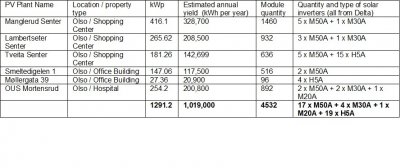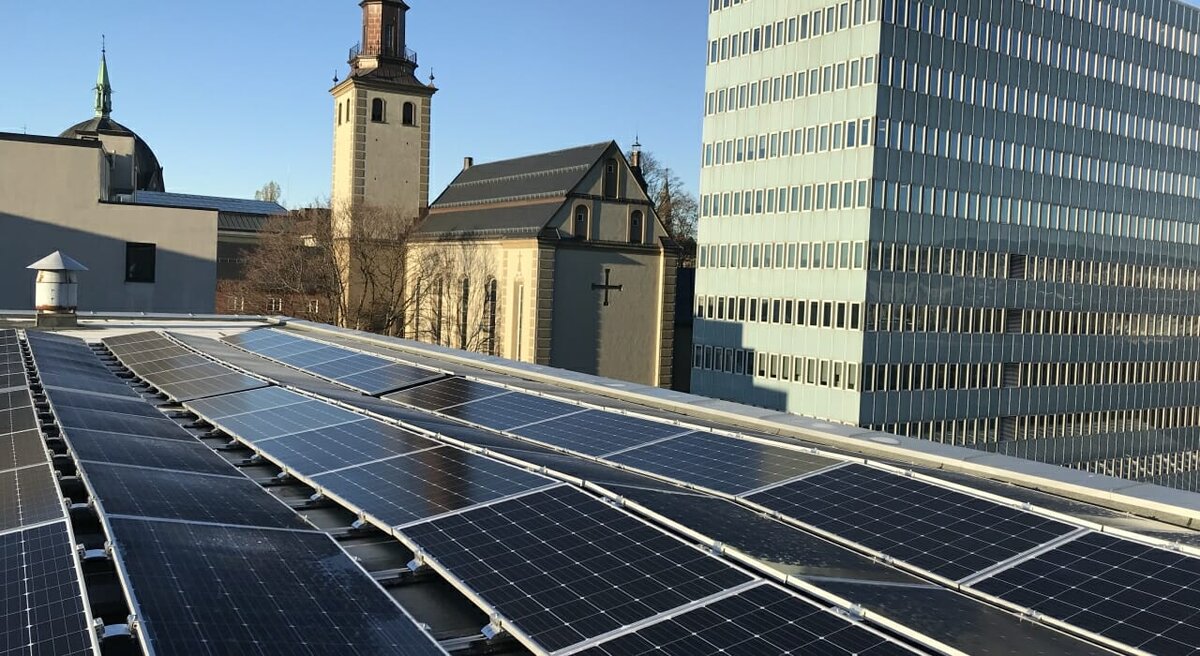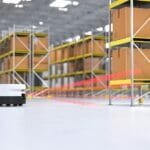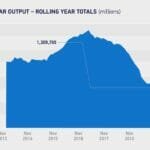As part of a pilot project, the largest housing and property co-op in Norway, OBOS Group, invested in PV plants on six of their buildings in Oslo in a partnership with Fortum Oslo Varme AS (formerly registered as Hafslund Varme AS at the project inception), the firm that provided the EPC services for the project.Green Responsibility
OBOS Group is a Norwegian housing co-op association that began operating in 1929 in Oslo to offer housing development at a time when it was difficult to get bank financing for the average worker. Since that time, OBOS has grown to be the largest co-operative building association in the Nordic region. There are over 450,000 co-op members and the company manages circa 220,000 dwellings in Norway.
In the past years, the environmental building regulations have been getting stricter and the members of OBOS have growing interest in more environmental solutions, such as lowering carbon emissions, local production of energy, more energy efficiency, etc.
As part of what they call green responsibility (#grøntansvar), OBOS is pursuing green initiatives and offering sustainable energy solutions for their customers in order to face the upcoming climate change challenges.
“We care about the footprint we put in the environment, and so do our customers. This is a step in the right direction for us as the owner of several commercial properties and shopping malls. One of OBOS’ goals is to become climate neutral by 2021,” says Mr. Nils Bøhler, Executive Vice President for Commercial Property at OBOS.
Valuable Experience
One of the objectives for initiating the 1.29MW PV solar pilot project was for OBOS to gain experience with PV rooftop plants and suppliers. The long term goal after gaining experience with PV was to potentially roll out similar measures on other buildings or housing companies in Norway that wanted to install solar modules on their own roofs.
The pilot project was an important part of OBOS’ commitment to green and sustainable energy. Investment in hydro-power as well as PV will help the company become self-sufficient with sustainable energy by 2021.
“This is an important part of OBOS’ commitment to green and sustainable energy. We want to pave the way for housing companies to benefit from the experience we do. In the long term, we expect housing companies to install solar cells themselves,” says Ms. Birgitte Molstad, environmental director at OBOS.
“The solar cell project is about more than profitability, today there is a long payback period for this type of plant. It is competence building that is important for us as a company to be able to help achieve the climate goals. As a major player in the real estate industry, we have a clear social responsibility, which we are very conscious of,” says Ms. Molstad.
Initial Study
Fortum Oslo Varme hired Multiconsult AS an energy consulting company, to plan out the PV project with the goal of 1GWh solar production annually. Multiconsult could decide on the number of modules and inverters needed at each building. As part of the study, the firm compared various string inverters and they convincingly recommended the Delta string inverters to OBOS.
Mr. Per Lindberg, Solar Energy Consultant at Multiconsult AS, reported: “There were several reasons for the choice of Delta inverters. The installers told us it was easy to install them, very installer friendly. Another thing we saw on the specification and confirmed was that the inverters have a very high conversion efficiency. Delta’s strong financial background was also part of the decision.”
PV Project Delivered
After the initial study by Multiconsult, Fortum Varme Oslo, delivered and installed OBOS’ installations. The OBOS properties that were outfitted with 7400 square meters of solar modules included 3 shopping centers, 2 office buildings and a hospital. The project was completed by Fortum Oslo Varme as the EPC in the second quarter of 2018.
“The OBOS project was Fortum Oslo Varme’s first PV project. An exciting project with a steep learning curve. Delta Electronics delivered as promised and the inverters work according to specification in the Nordic climate,” says Mr. Anders Westin, business developer in Fortum Oslo Varme.

In total, the PV project has a goal to produce 1,000,000 kWh of renewable solar power per year and actual production for 2019 will come in close, around 90-92% of the target due to below average months of solar irradiation in the fall and winter. The solar power produced will cover the energy consumption of around 80 average Oslo apartments this year, and will be used locally as much as possible.Solar Myths
Norway may seem to be lacking enough sun by some to generate optimal PV energy. It is true that solar irradiation varies throughout the year here. But by optimizing orientation and angle of inclination of the solar modules, significant energy production is achieved in Norway from March to October. According to solar irradiation studies, the PV generation potential for Southern and Eastern Norway is similar to that of parts of Northern Germany where solar PV use is widespread.
The oversizing of the solar array by up to 150% is another way the OBOS solar installations can get more yield from the Delta inverters. When the hours of daylight are decreased in the fall, the oversizing still allows an optimal amount of solar energy to be produced on a daily basis. The Delta inverter electronics are designed to be robust enough to handle this situation.
The IP65 enclosure protection makes the inverters completely sealed from moisture intrusion from rain or snow that comes in Norway starting in the fall. The inverters in the Norway plants were installed outside at most of the sites thanks to the climate-protected design.
Sunny Conclusion
In the building industry it is estimated that 40% of CO2 outgassing globally is from the manufacturing of building materials and in the operation of buildings.
OBOS has recognized this and as a leader in home building and property management in Norway have taken aggressive steps to become greener and attack the climate change with their own green buildings and clean energy sources while influencing others to do the same.
Green buildings are essential to reducing carbon but also have economic benefits. Green buildings show higher energy-efficiency levels and the operational expenses will decrease by reducing the unnecessary waste. If solar PV is employed on the rooftop, all of the internal power loads are fed by locally produced renewable energy, reducing operating costs and reducing the carbon footprint. OBOS provides an excellent example for other building sector companies thinking about greening up their building construction practices.
According to OBOS Projects manager, Mr. Joakim Larsen, “In Norway there is a move towards greener buildings and construction. Both private and public owners are focused on having more environmentally friendly buildings, with lower CO2 emissions with more production of local energy and solar panels are part of that strategy for both private and public owners in Norway and in Oslo.”
Delta was proud to be a supplier of the inverters for the OBOS project and support the distribution of more PV capacity in Norway. It was especially rewarding since we share the same green mission as OBOS.
According to Mr. Andreas Hoischen, Delta Senior Director Business Unit Photovoltaic Inverters, “Delta Electronics had a very good cooperation on the OBOS projects and is expecting to see more growth with Delta inverters in large rooftop applications within all of Europe as this sector is growing due to the trend to build more net-zero buildings.”
Together, working smartly with our partners we can find innovative solar energy applications that are environmentally friendly and also economically viable. As OBOS demonstrates, it is possible to be green and remain in solid financial shape as a business. The future of solar energy is looking bright in Norway.





